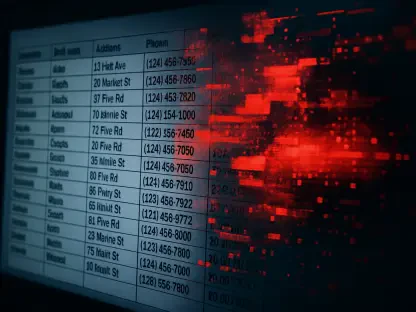In recent cybersecurity developments, the notorious Roundcube remote code execution (RCE) vulnerability, identified as CVE-2025-49113, has shaken the digital security landscape. With a critical CVSS score of 9.9, it affects over 80,000 Roundcube webmail servers globally, spanning versions from 1.1.0 to 1.6.10. Emerging from years of obscured detection, this vulnerability has highlighted the desperate need in the cybersecurity community to enhance vigilance in code analysis and server security configurations.
Roundcube: Context and Vulnerability Significance
Roundcube, a widely-used webmail client, serves as the backbone for countless organizations’ email communications. With its open-source and user-friendly interface, it has gained popularity over the years. However, the CVE-2025-49113 vulnerability has introduced alarming security concerns. This vulnerability underscores an urgent scenario where server security must be reevaluated, especially given Roundcube’s extensive user base, which now faces significant security risks. This development amplifies the necessity for ongoing vigilance in cyber defense frameworks.
Core Features and Exploit Pathways
Logic Flaw and PHP Object Injection
The vulnerability stems from a fundamental logic flaw related to PHP object injection, which allows malicious actors to manipulate unfiltered inputs. By examining variable names beginning with an exclamation mark, hackers can corrupt sessions, effectively opening doors for unauthorized code execution. This mechanism exploits inherent flaws in code logic, making traditional detection methods inadequate.
Exploit Mechanism and File Name Injection
Another critical aspect of the CVE-2025-49113 vulnerability is its file name injection capability. This technique allows attackers to bypass usual security filters, leveraging file names to stealthily introduce hazardous payloads. This aspect of the exploit underscores the sophistication of modern cyber threats, as the programming lapses in allowing unsanitized inputs enable malicious users to penetrate systems adeptly.
Recent Developments and Exploitation in Cybersecurity
The cybersecurity community has witnessed an alarming increase in the exploitation of the Roundcube vulnerability on the dark web. Emerging trends indicate a shift in webmail vulnerabilities targeting, with cyber attack strategies evolving to bypass traditional security frameworks. The revelation of exploit codes publicly underscores a pressing need for systems to be promptly patched, as shadowy cyber actors increasingly capitalize on such vulnerabilities.
Real-World Impact on Webmail Security
Real-world consequences of the Roundcube vulnerability are profound, influencing configurations like cPanel, Plesk, and ISPConfig. Numerous servers remain susceptible to these exploits, stressing the urgency for systemic upgrades. Notably, a separate vulnerability, CVE-2024-42009, has been exploited in phishing campaigns by groups like UNC1151, illustrating tactical shifts in cyber threats aimed at Roundcube users and emphasizing broader implications for webmail security standards.
Challenges and Prospective Mitigations
The path to patching the Roundcube vulnerability encounters various challenges, ranging from technical server configuration hurdles to regulatory complexities. These roadblocks hinder swift and comprehensive security implementations. However, current efforts focus on overcoming these challenges, contributing to developing robust mitigation strategies that aim to bolster Roundcube’s resistance to future attacks.
Future Outlook and Security Enhancements
Looking ahead, potential breakthroughs in vulnerability detection and prevention are anticipated to fortify webmail security significantly. Current developments suggest an evolution in security practices, seeking to integrate more sophisticated detection mechanisms. Continuous advancements will likely yield long-term improvements in guarding against exploits similar to CVE-2025-49113, poised to transform the current landscape of cybersecurity defense.
Conclusion
The Roundcube RCE vulnerability presents a stark reminder of the persistent and evolving threats within cybersecurity. The mechanisms of the CVE-2025-49113 exploit demonstrated vulnerabilities in logical processing and input sanitization that require immediate addressal. The extensive impact on webmail server configurations highlighted systemic security weaknesses needing urgent resolution. Moving forward, the cybersecurity field should focus on enhancing vulnerability detection capabilities and adopting a proactive approach to threat management. This evolution will be crucial in responding not only to current but also future cybersecurity challenges, fortifying webmail server integrity.









